Monsieur Zenith the Albino is an ambiguous villain created by writer Anthony Skene for the "Sexton Blake" series of detective pulp fiction.
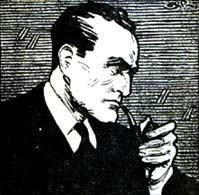
Sexton Blake is a fictional character, a detective who has been featured in many British comic strips, novels and dramatic productions since 1893. Sexton Blake adventures were featured in a wide variety of British and international publications from 1893 to 1978, comprising more than 4,000 stories by some 200 different authors. Blake was also the hero of numerous silent and sound films, radio serials, and a 1960s ITV television series.
Story Paper Collectors' Digest was a journal published from November 1946 until May 2005, and with special intermittent issues continuing on until late 2007. It was created by Herbert Leckenby. With articles on story papers, it heavily featured the work of Charles Hamilton, Edwy Searles Brooks and the tales of detectives Sexton Blake and Nelson Lee. It was published monthly until 2004. The editors were Herbert Leckenby until his death in October 1959, then Eric Fayne until January 1987 when he retired as editor, then Mary Cadogan.
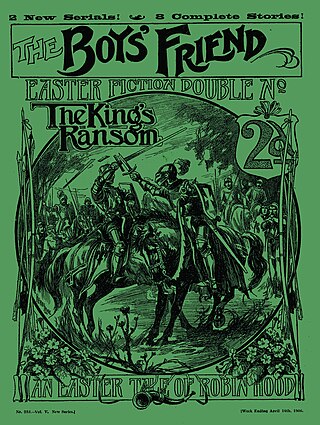
The Boys' Friend was a British story paper of the early 20th century, published by Amalgamated Press from 1895 to 1927.
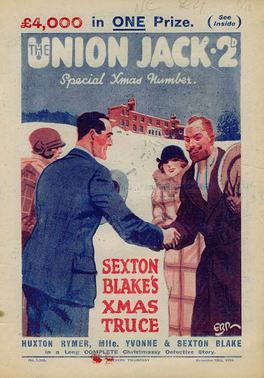
Eric Robert Parker was a prolific British illustrator and comics artist best known for illustrating the adventures of Sexton Blake in various periodicals.
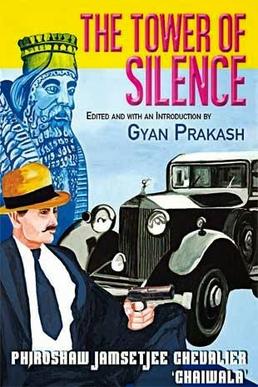
The Tower of Silence is a novel by Indian author Phiroshaw Jamsetjee Chevalier, allegedly written in 1927 and recovered from a lost manuscript by historian Gyan Prakash. It was first published in complete form by HarperCollins in 2013.
Sexton Blake is a 1928 six-part silent film serial produced by British Filmcraft. The serial stars Langhorne Burton as the fictional detective Sexton Blake, and Mickey Brantford as his assistant Tinker.
Francis (Frank) Howel Evans (1867–1931) was a Welsh author who wrote for many British story papers such as Chums, The Boy's Own Paper, and The Boys' Friend during the first few decades of the 20th century. He also wrote under the pen names Atherley Daunt and Crutchley Payne. Many of his stories take place in the theatre.

George Hamilton Teed was a Canadian author who also wrote under the pen-names G. H. Teed, Hamilton Teed, Louis Brittany, Peter Kingsland, and Desmond Reid. Teed was born in Woodstock, New Brunswick. He specialized in adventure fiction and detective stories, but also wrote science fiction and the odd romance. He is best remembered for his tales of Sexton Blake, a popular, fictional British detective who featured in a wide variety of publications in the first half of the twentieth century. He wrote close to three hundred Blake tales, more than any other author, and his creations and writings are considered "the best in Blake history before the Second World War."

Nelson Lee is a fictional detective who featured in the Amalgamated Press papers over a 40-year run. Created in 1894 by Maxwell Scott he appeared in various publications including The Halfpenny Marvel, Pluck, The Boys' Friend, Boys' Realm, The Boys' Herald and the Union Jack In 1915 he was given his own story-paper series, The Nelson Lee Library, which ran until 1933.

John William Staniforth was a British writer who wrote under the pen-names Stain Cortley, John Andrews and Maxwell Scott.

Henry Thomas Blyth (1852–1898) was a British writer who also wrote under the pen-name Hal Meredith. Blyth was born in Greenwich, London. He wrote for many of Alfred Harmsworth's papers of the 1890s, and is mostly remembered for creating detective Sexton Blake.

Robert Murray Graydon was a British novelist who also wrote under the pen-names Robert Murray, Murray Hamilton, and Murray Roberts. He is best remembered for his Sexton Blake stories featuring the Criminals' Confederation, a global criminal organisation that featured prominently in the Blake magazines from 1916 to the 1930s.

William Murray Graydon was an extremely prolific American writer who also wrote under the pen-names Alfred Armitage, William Murray, and Tom Olliver. He wrote adventure, historical fiction and Sexton Blake detective stories for boy's story papers.

The Nelson Lee Library was a story paper of the first third of the 20th century, published by Amalgamated Press. It featured the adventures of private detective Nelson Lee and his boy assistant Nipper.
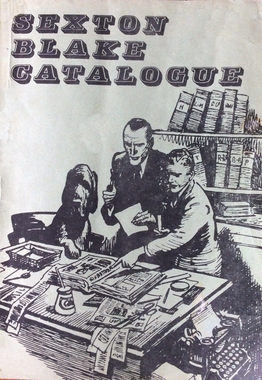
Sexton Blake is a fictional detective who has been featured in many British comic strips, novels, and dramatic productions since 1893. He was featured in various British publications from 1893 to 1978 in a variety of formats: single-issue adventures, short stories, serials, and comic strips. In total, Blake appeared in more than 4,000 stories by over 200 different authors. During its golden age (1920s–1940s), Blake's adventures were widely read and translated into at least twenty different languages, including Swedish, Norwegian, Finnish, Dutch, Spanish, German, Portuguese, Italian, French, Arabic, Hindi, and Afrikaans.
Sexton Blake is a fictional detective who has been featured in many British comic strips, novels, and dramatic productions since 1893. He was featured in various British publications from 1893 to 1978 in a variety of formats: single-issue adventures, short stories, serials, and comic strips. In total, Blake appeared in more than 4,000 stories by over 200 different authors.
During its golden age (1920s–1940s), Blake's adventures were widely read and translated into at least twenty different languages, including Swedish, Norwegian, Finnish, Dutch, Spanish, German, Portuguese, Italian, French, Arabic, Hindi, and Afrikaans.
Sexton Blake is a fictional detective who has been featured in many British comic strips, novels, and dramatic productions since 1893. He was featured in various British publications from 1893 to 1978 in a variety of formats: single-issue adventures, short stories, serials, and comic strips. In total, Blake appeared in more than 4,000 stories by over 200 different authors.
Sexton Blake is a fictional detective who has been featured in many British comic strips, novels, and dramatic productions since 1893. He was featured in various British publications from 1893 to 1978 in a variety of formats: single-issue adventures, short stories, serials, and comic strips. In total, Blake appeared in more than 4,000 stories by over 200 different authors.
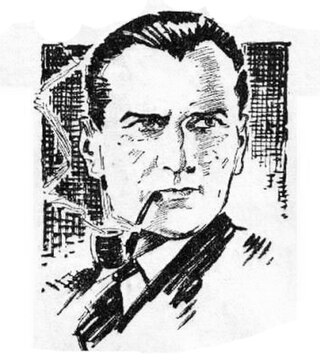
Dixon Hawke was a fictional detective who was featured in the DC Thomson publications from 1912 to 2000. Created in 1912 by an unknown author for DC Thomson he appeared in various publications including The Saturday Post, The Sunday Post, Adventure, The Sporting Post, Topical Times, The Evening Telegraph and The Dixon Hawke Library.













